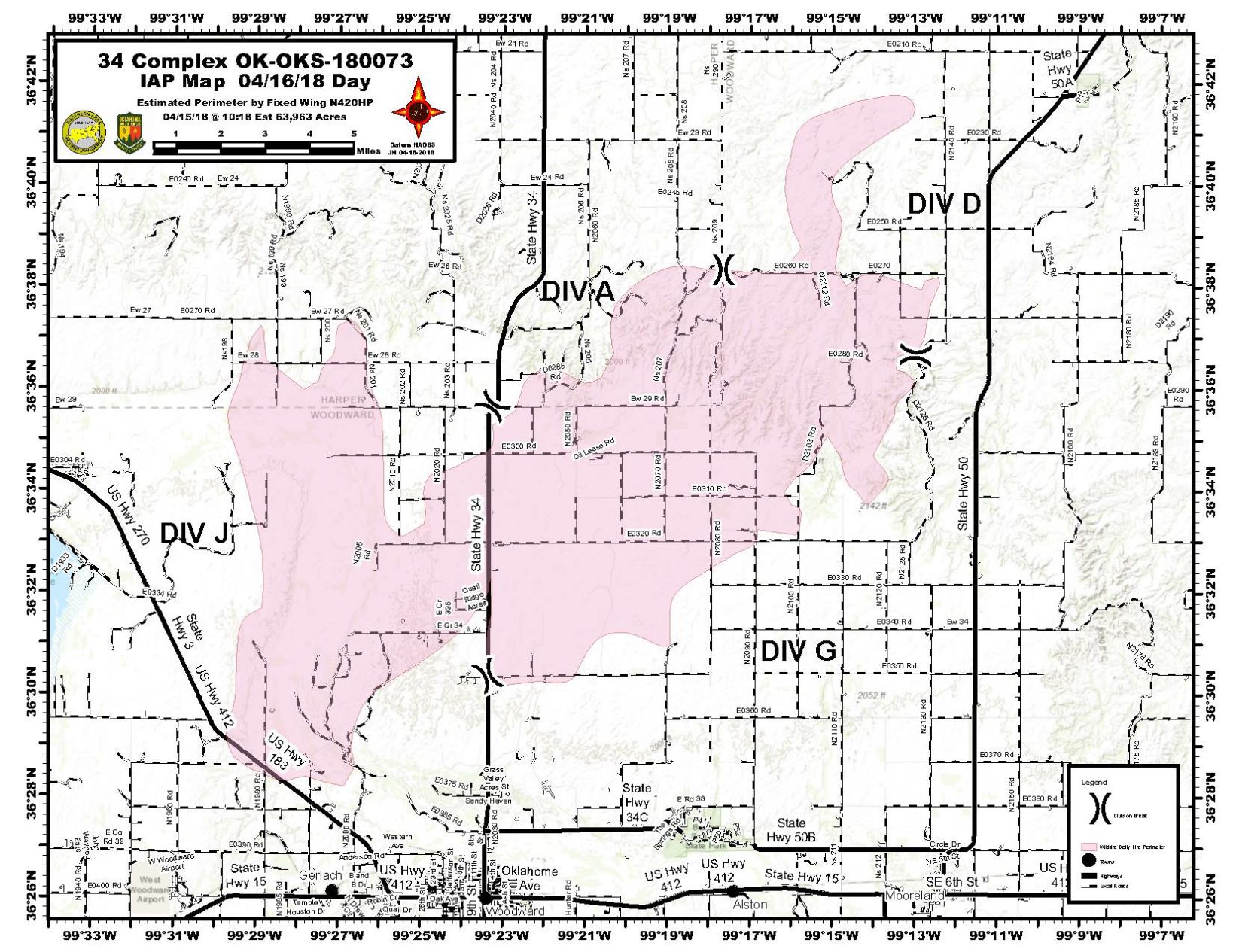Excessive drought, low relative humidity and high winds have led to a tinderbox situation across western Oklahoma this spring. For the third year in a row officials are using all means available to battle wildfires.
On April 13, Oklahoma Gov. Mary Fallin declared a state of emergency for 52 counties west of U.S. Highway 75 in Tulsa, to prepare the public for fire emergencies. That declaration remains in effect as of April 16.
So far, wildfires have burned a total of about 325,000 acres, claimed two lives and injured seven. The Oklahoma Office of the Chief Medical Examiner reported a 62-year-old man died April 12 in Roger Mills County as a result of injuries sustained in the fire that began southeast of Leedey, Oklahoma. The Dewey County sheriff also reported a woman died in her vehicle at a residence near Seiling, Oklahoma, as a result of the Rhea Fire.
On April 15, the Oklahoma Department of Agriculture, Food and Forestry provided an update on the separate fire situations across western Oklahoma that began April 12 and were ongoing as of press time. The Oklahoma Forestry Services Daily Fire Situation Report and Mark Goeller, OFS chief, detailed the status of the current active fire incidents.
34 Complex
A complex of several active fires in Woodward County and to the northern state border, starting at Oklahoma Highway 34 to Highway 50. At its peak it was reported to span roughly 115,000 acres.
Goeller said high winds and low humidity pushed the fire south. As of April 15, OFS reported it is 45 percent contained and is now at 67,778 acres. The fire was intense enough to burn over several nights. There are reports of structures and power lines lost. Damage assessments are ongoing.
Crews from local fire departments, county task forces and the OFS were joined by the Southern Area Type 2 Gold Incident Management Team April 16. OFS has brought in a couple Type 1 incident management teams to assist with the organization and resource management.
Most of the crews, Goeller said, were focused on concentrating on areas in the fire region with heavy fuel loads and potential for flare-ups to try to get ahead of the forecasted weather.
Rhea Fire
The fire began in Dewey County April 12 and has since moved into Custer and Woodward counties. As of April 16 it has burned 245,433 acres, a swath more than 25 miles long and 5 miles wide. This burned across the Canadian River and on toward Woodward up to U.S. Highway 270. The fire moved into the town of Vici and both it and the town of Mutual were evacuated April 12 and 13. There have been structures lost, but assessments are ongoing.
Crews are working under high wind and low relative humidity conditions and there was substantial growth in the fire toward the southeast over the weekend, Goeller reported.
Fire-fighting aircraft were ordered up to work early the morning of April 13 before fire conditions could preclude their use. Goeller explained that with high winds and low relative humidity, the aircraft cannot fly safely, nor will their fire retardants be useful.
“With low relative humidity, when they drop water or retardants, it isn’t effective,” Goeller said. “So we’re trying to get them up and reduce the impact on Vici and Mutual.”
As of April 16, two Super Scoopers have been deployed to assist with fire suppression efforts.
Goeller told reporters April 13 that of the three reported lost turkey hunters, two were found April 12 and the third was found overnight and life-flighted to a burn center for treatment. He could not report on the hunter’s condition status at the time.
A Type 1 incident management team was expected to arrive April 14 because of the size of the fire and its problematic behavior. The IMT can take command from the OFS so that they can relieve some staff and local firefighting crews. This allows those crews to restock and rest and get back into the fight later.
Shaw Fire
Located in Roger Mills County, this started on private land north of Regan and spread into the Black Kettle National Grassland, burning 7,257 acres. It has been 40 percent contained and crews are on the scene. Resources should be released soon so that they are available for any potential fires that crop up.
In total, an additional 5,200 acres across Roger Mills, Creek, Woodward, Lincoln, Logan, Caddo and Kay counties have burned in separate wildfires that flared up over the weekend. Over the weekend the town of Martha, Oklahoma, suffered substantial damage from the wildfire.
Goeller said management resources were gathered from far and wide to respond to the fires. In addition to the in-state management teams in place, there are resources from the Southern Forest Fire Compact to help oversee the fire response. They include Type 6 engines, commonly known as brush pumpers, as well as a suppression group from Tennessee that came in overnight to assist. The Oklahoma Army National Guard is on state active duty and is positioned in Lexington and Tulsa to respond if needed.
In Woodward, there are two Type 1 helicopters and three heavy air tankers that can be called up. Goeller said there’s an order for two CF-14s to work in Dewey and Woodward Counties to scoop water off of the lakes to use in fighting the fire.
“It is critical that we try to minimize human caused ignitions,” Goeller said. “We know that there are accidental ignitions, from power lines arcing. But make the decision to not grill outside, to check your trailer chains that they aren’t hitting the pavement and sparking. Don’t burn brush today.”
Resources are already deployed to the western part of the state to fight the fires on the ground now, and the public can help by trying to keep new ones from starting in other parts of the state and further stretch those resources.
Jennifer M. Latzke can be reached at 620-227-1807 or [email protected].


